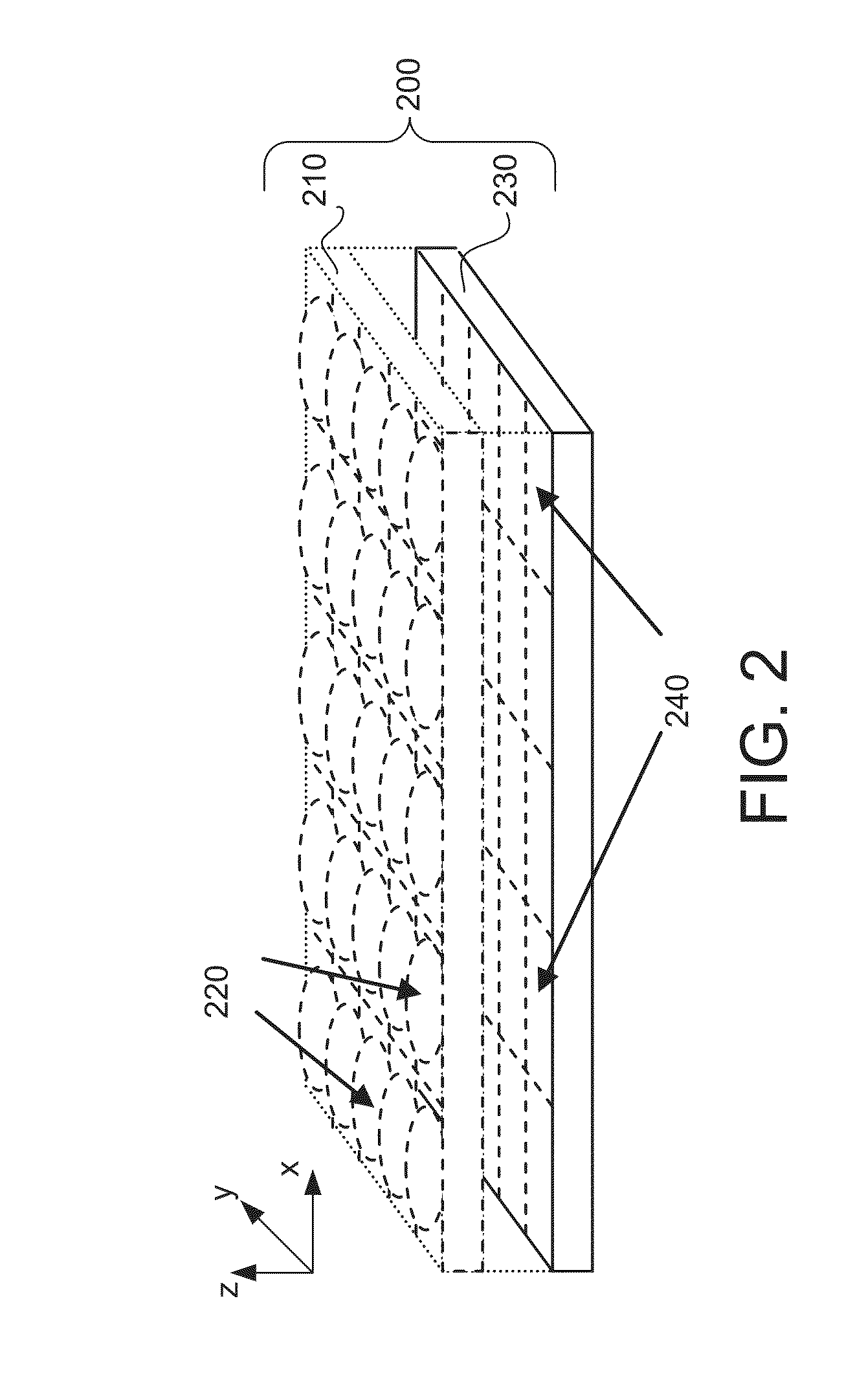Systems and methods for determining depth from multiple views of a scene that include aliasing using hypothesized fusion
a technology of multiple views and depth, applied in the field of super resolution processing, can solve the problems of affecting the overall form factor of the mobile device, image sensors are subject to various performance constraints,
- Summary
- Abstract
- Description
- Claims
- Application Information
AI Technical Summary
Benefits of technology
Problems solved by technology
Method used
Image
Examples
Embodiment Construction
[0060]Turning now to the drawings, systems and methods for controlling the amount of aliasing in images captured by an array camera and for synthesizing higher resolution images from the captured images using super resolution (SR) processing in accordance with embodiments of the invention are illustrated. Images exhibit aliasing when they are sampled at too low a sampling frequency, resulting in visible steps on diagonal lines or edges (also referred to as “jaggies”) and artificial low frequency patterns (often referred to as Moiré). These artifacts are a product of the incorrect sampling of higher frequencies, which results in the higher frequencies folding back (being aliased) into lower frequencies. Aliasing is generally undesirable, however, array cameras in accordance with embodiments of the invention can utilize the high frequency information folded into the lower frequencies during SR processing. In a SR process, low resolution (LR) images that include sampling diversity (i.e...
PUM
 Login to View More
Login to View More Abstract
Description
Claims
Application Information
 Login to View More
Login to View More - R&D
- Intellectual Property
- Life Sciences
- Materials
- Tech Scout
- Unparalleled Data Quality
- Higher Quality Content
- 60% Fewer Hallucinations
Browse by: Latest US Patents, China's latest patents, Technical Efficacy Thesaurus, Application Domain, Technology Topic, Popular Technical Reports.
© 2025 PatSnap. All rights reserved.Legal|Privacy policy|Modern Slavery Act Transparency Statement|Sitemap|About US| Contact US: help@patsnap.com



